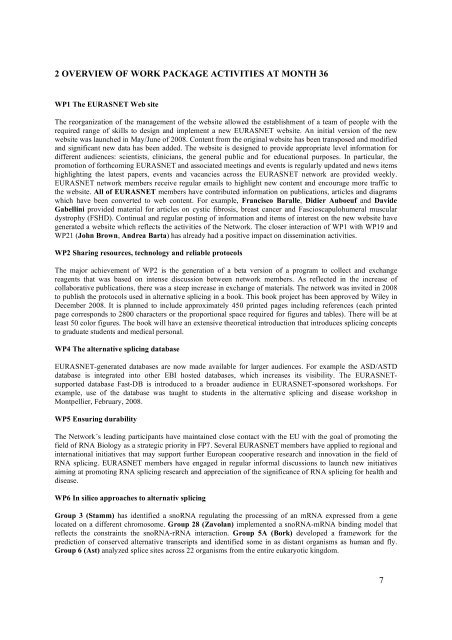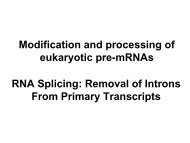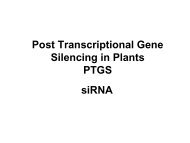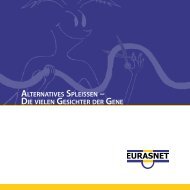Create successful ePaper yourself
Turn your PDF publications into a flip-book with our unique Google optimized e-Paper software.
2 OVERVIEW OF WORK PACKAGE ACTIVITIES AT MONTH 36WP1 The <strong>EURASNET</strong> Web siteThe reorganization of the management of the website allowed the establishment of a team of people with therequired range of skills to design and implement a new <strong>EURASNET</strong> website. An initial version of the newwebsite was launched in May/June of <strong>2008</strong>. Content from the original website has been transposed and modifiedand significant new data has been added. The website is designed to provide appropriate level information fordifferent audiences: scientists, clinicians, the general public and for educational purposes. In particular, thepromotion of forthcoming <strong>EURASNET</strong> and associated meetings and events is regularly updated and news itemshighlighting the latest papers, events and vacancies across the <strong>EURASNET</strong> network are provided weekly.<strong>EURASNET</strong> network members receive regular emails to highlight new content and encourage more traffic tothe website. All of <strong>EURASNET</strong> members have contributed information on publications, articles and diagramswhich have been converted to web content. For example, Francisco Baralle, Didier Auboeuf and DavideGabellini provided material for articles on cystic fibrosis, breast cancer and Fascioscapulohumeral musculardystrophy (FSHD). Continual and regular posting of information and items of interest on the new website havegenerated a website which reflects the activities of the Network. The closer interaction of WP1 with WP19 andWP21 (John Brown, Andrea Barta) has already had a positive impact on dissemination activities.WP2 Sharing resources, technology and reliable protocolsThe major achievement of WP2 is the generation of a beta version of a program to collect and exchangereagents that was based on intense discussion between network members. As reflected in the increase ofcollaborative publications, there was a steep increase in exchange of materials. The network was invited in <strong>2008</strong>to publish the protocols used in alternative splicing in a book. This book project has been approved by Wiley inDecember <strong>2008</strong>. It is planned to include approximately 450 printed pages including references (each printedpage corresponds to 2800 characters or the proportional space required for figures and tables). There will be atleast 50 color figures. The book will have an extensive theoretical introduction that introduces splicing conceptsto graduate students and medical personal.WP4 The alternative splicing database<strong>EURASNET</strong>-generated databases are now made available for larger audiences. For example the ASD/ASTDdatabase is integrated into other EBI hosted databases, which increases its visibility. The <strong>EURASNET</strong>supporteddatabase Fast-DB is introduced to a broader audience in <strong>EURASNET</strong>-sponsored workshops. Forexample, use of the database was taught to students in the alternative splicing and disease workshop inMontpellier, February, <strong>2008</strong>.WP5 Ensuring durabilityThe Network´s leading participants have maintained close contact with the EU with the goal of promoting thefield of RNA Biology as a strategic priority in FP7. Several <strong>EURASNET</strong> members have applied to regional andinternational initiatives that may support further European cooperative research and innovation in the field ofRNA splicing. <strong>EURASNET</strong> members have engaged in regular informal discussions to launch new initiativesaiming at promoting RNA splicing research and appreciation of the significance of RNA splicing for health anddisease.WP6 In silico approaches to alternativ splicingGroup 3 (Stamm) has identified a snoRNA regulating the processing of an mRNA expressed from a genelocated on a different chromosome. Group 28 (Zavolan) implemented a snoRNA-mRNA binding model thatreflects the constraints the snoRNA-rRNA interaction. Group 5A (Bork) developed a framework for theprediction of conserved alternative transcripts and identified some in as distant organisms as human and fly.Group 6 (Ast) analyzed splice sites across 22 organisms from the entire eukaryotic kingdom.7







